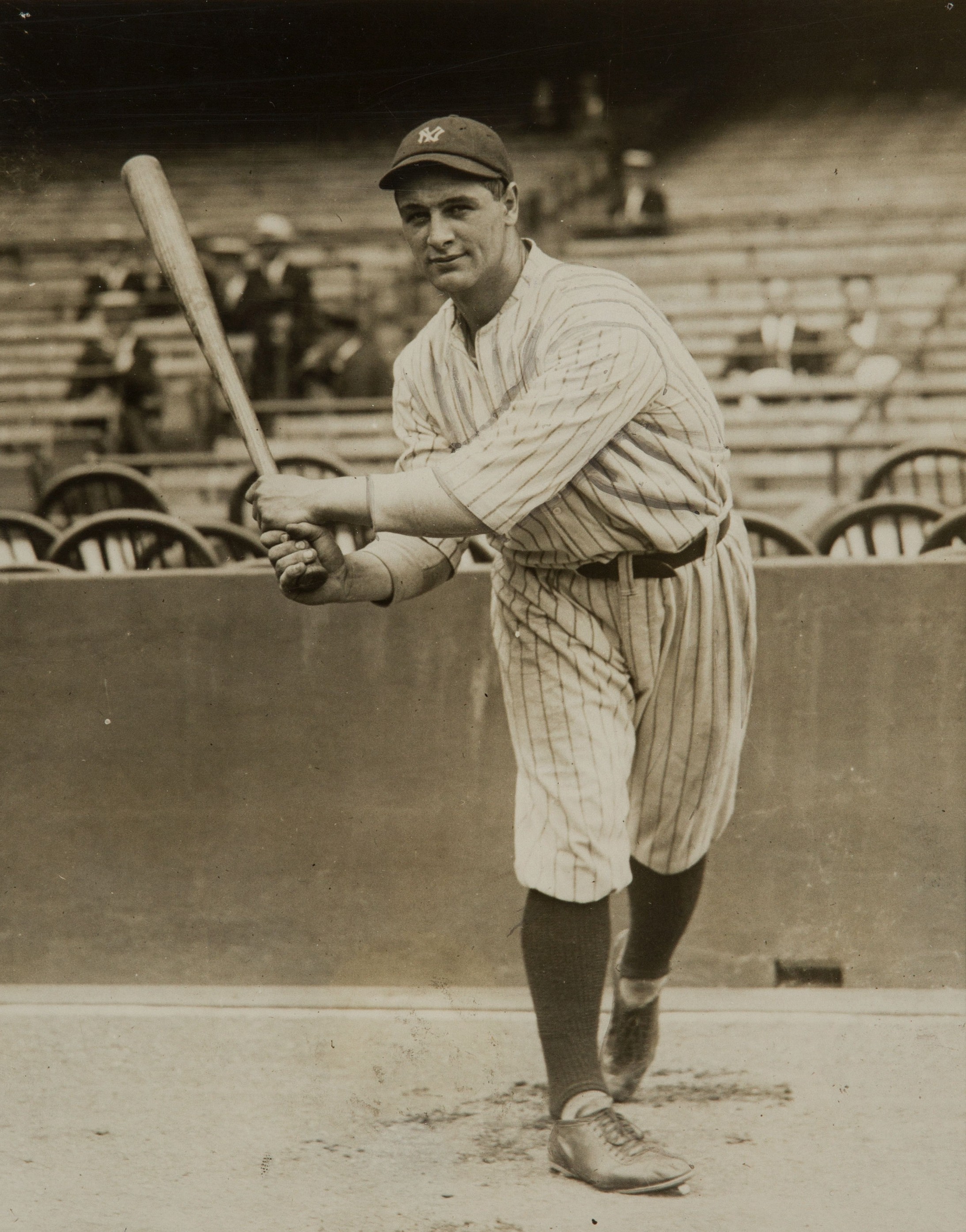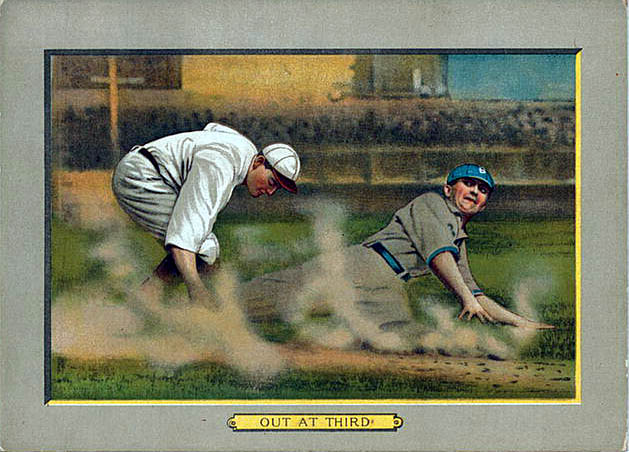|
Mark Huismann
Mark Lawrence Huismann (born May 11, 1958) is an American former Major League Baseball relief pitcher. Early years Huismann was born in Littleton, Colorado, and attended Colorado State University upon graduation from Thomas B. Doherty High School in Colorado Springs. Shortly after his 21st birthday, he was drafted by the Chicago Cubs in the 23rd round of the 1979 Major League Baseball Draft, but did not sign. After going undrafted in the 1980 Major League Baseball Draft, he signed with the Kansas City Royals as an amateur free agent. Kansas City Royals After four seasons in the minors, in which he compiled a 20–15 record with 49 saves and a 2.29 earned run average, Huismann made his major league debut on August 16, 1983 against the Detroit Tigers. Huismann drove his parents' car to the game, and almost didn't make it, as the car overheated three times on the way to Royals Stadium. He made it in time to enter the game in the fifth inning, and with runners on first and thir ... [...More Info...] [...Related Items...] OR: [Wikipedia] [Google] [Baidu] |
Relief Pitcher
In baseball and softball, a relief pitcher or reliever is a pitcher who enters the game after the starting pitcher is removed because of fatigue, ineffectiveness, injury, or ejection, or for other strategic reasons, such as inclement weather delays or pinch hitter substitutions. Relief pitchers are further divided informally into various roles, such as closers, setup men, middle relief pitchers, left/right-handed specialists, and long relievers. Whereas starting pitchers usually throw so many pitches in a single game that they must rest several days before pitching in another, relief pitchers are expected to be more flexible and typically pitch in more games with a shorter time period between pitching appearances but with fewer innings pitched per appearance. A team's staff of relievers is normally referred to metonymically as a team's bullpen, which refers to the area where the relievers sit during games, and where they warm-up prior to entering the game. History Pre-bul ... [...More Info...] [...Related Items...] OR: [Wikipedia] [Google] [Baidu] |
Baseball-Reference
Baseball-Reference is a website providing baseball statistics for every player in Major League Baseball history. The site is often used by major media organizations and baseball broadcasters as a source for statistics. It offers a variety of advanced baseball sabermetrics in addition to traditional baseball "counting stats". Baseball-Reference is part of Sports Reference, LLC; according to an article in Street & Smith's ''Sports Business Journal'', the company's sites have more than one million unique users per month. History Founder Sean Forman began developing the website while working on his Ph.D. dissertation in applied math and computational science at the University of Iowa. While writing his dissertation, he had also been writing articles on and blogging about sabermetrics. Forman's database was originally built from the '' Total Baseball'' series of baseball encyclopedias. The website went online in April 2000, after first being launched in February 2000 as part of th ... [...More Info...] [...Related Items...] OR: [Wikipedia] [Google] [Baidu] |
1984 American League Championship Series
The 1984 American League Championship Series matched the East Division champion Detroit Tigers against the West Division champion Kansas City Royals. The Tigers took the series in a three-game sweep to advance to the 1984 World Series against the San Diego Padres. The series was the 16th ALCS in all and the last to be played as a best-of-five. In 1985, the League Championship Series changed to a best-of-seven format. Due to a strike by major league umpires, the series was played using local and collegiate umpires, with former AL umpire and league supervisor Bill Deegan working home plate for all three games. Background The 1984 American League Championship Series ended in a sweep by the Tigers, although Games 2 and 3 were both close. Game 2 was decided in extra innings, and the Tigers clinched the pennant with a 1-0 victory in Game 3. It wasn't that surprising given the fact the Royals won 20 fewer games during the season and had won the AL West by a mere three games over bo ... [...More Info...] [...Related Items...] OR: [Wikipedia] [Google] [Baidu] |
Fort Scott Tribune
''The Fort Scott Tribune'' is a daily newspaper serving Fort Scott, Kansas, United States. It has been owned by Rust Communications since 2004.Rust Publishing Buys Fort Scott Tribune-Monitor '''', August 3, 2004. History ''The Fort Scott Banner'' began publication in 1882, and the same group began publication of the ''Fort Scott Tribune'' as a daily on October 1, 1884, with J.B. Chapman as its first editor.[...More Info...] [...Related Items...] OR: [Wikipedia] [Google] [Baidu] |
Run (baseball)
In baseball, a run is scored when a player advances around first, second and third base and returns safely to home plate, touching the bases in that order, before three outs are recorded and all obligations to reach base safely on batted balls are met or assured. A player may score by hitting a home run or by any combination of plays that puts him safely "on base" (that is, on first, second, or third) as a runner and subsequently brings him home. Once a player has scored a run, they may not attempt to score another run until their next turn to bat. The object of the game is for a team to score more runs than its opponent. The Official Baseball Rules hold that if the third out of an inning is a force out of a runner advancing to any base then, even if another baserunner crosses home plate before that force out is made, his run does not count. However, if the third out is not a force out, but a tag out, then if that other baserunner crosses home plate before that tag out is ... [...More Info...] [...Related Items...] OR: [Wikipedia] [Google] [Baidu] |
Lance Parrish
Lance Michael Parrish (born June 15, 1956), nicknamed "Big Wheel", is an American former baseball catcher who played Major League Baseball (MLB) from 1977 through 1995. Born in Pennsylvania, Parrish grew up in Southern California and excelled in both baseball and football. He was drafted by the Detroit Tigers in 1974, and after four years in the minor leagues, he played for the Tigers for a decade from 1977 to 1986. He later played for the Philadelphia Phillies (1987–1988), California Angels (1989–1992), Seattle Mariners (1992), Cleveland Indians (1993), Pittsburgh Pirates (1994), and Toronto Blue Jays (1995). Parrish helped lead the Tigers to the 1984 World Series championship, was selected as an All-Star eight times (1980, 1982–1986, 1988, 1990), and won six Silver Slugger Awards (1980, 1982–1984, 1986, 1990) and three Gold Glove Awards (1983–1985). Over his 19 MLB seasons, he compiled a .252 batting average with 324 home runs, and 1,070 runs batted in (RBIs). At the ... [...More Info...] [...Related Items...] OR: [Wikipedia] [Google] [Baidu] |
Cleanup Hitter
In baseball, a cleanup hitter is the fourth hitter in the batting order. The cleanup hitter is traditionally the team's most powerful hitter. His job is to "clean up the bases", i.e., drive in base runners. Theory The thinking behind the use of the cleanup hitter is that at least one of the batters before him will reach base somehow, usually via a walk or a base hit. Traditionally, the lead off hitter, the number one spot in the batting order, has good foot speed, plate discipline, and a high on-base percentage. The second batter is usually a contact hitter, meaning he is able to consistently make contact with the ball and put it in play to move base runners forward and into scoring position. The first or second batter might bunt his way on base as they both will be speedy runners. The third batter is usually the best batter, the hitter with the highest batting average. He has the role of scoring runs himself, but his job comes down to getting on base for the cleanup hi ... [...More Info...] [...Related Items...] OR: [Wikipedia] [Google] [Baidu] |
Out (baseball)
In baseball, an out occurs when the umpire rules a batter or baserunner out. When a batter or runner is out, they lose their ability to score a run and must return to the dugout until their next turn at bat. When three outs are recorded in a half-inning, the batting team's turn expires. To signal an out, an umpire generally makes a fist with one hand, and then flexes that arm either upward, particularly on pop flies, or forward, particularly on routine plays at first base. Home plate umpires often use a "punch-out" motion to signal a called strikeout. Ways of making outs * The most common ways batters or runners are put out are when: ** The batter strikes out (they make three batting mistakes, known as ''strikes'', without hitting the ball into fair territory); ** The batter flies out (they hit the ball and it is caught before landing); ** a baserunner is tagged out (they are touched by the ball, held in an opponent's hand, while not on a base); ** a baserunner is forced o ... [...More Info...] [...Related Items...] OR: [Wikipedia] [Google] [Baidu] |
Inning
In baseball, softball, and similar games, an inning is the basic unit of play, consisting of two halves or frames, the "top" (first half) and the "bottom" (second half). In each half, one team bats until three outs are made, with the other team playing defense. A full baseball game is typically scheduled for nine innings, while softball games consist of seven innings; although this may be shortened due to weather or extended if the score is tied at the end of the scheduled innings. The use of the term ''inning'' in baseball and softball contrasts with cricket and rounders, in which the term is '' innings'' in both singular and plural. Gameplay Each half-inning formally starts when the umpire calls "Play" or "Play ball". A full inning consists of six outs, three for each team; and, in Major League Baseball and most other adult leagues, a regulation game consists of nine innings. The visiting team bats in the first half-inning, the ''top'' of the inning, derived from the positio ... [...More Info...] [...Related Items...] OR: [Wikipedia] [Google] [Baidu] |
Royals Stadium
Kauffman Stadium (), often called "The K", is a baseball stadium located in Kansas City, Missouri. It is home to the Kansas City Royals of Major League Baseball (MLB). It is part of the Truman Sports Complex together with the adjacent Arrowhead Stadium, home of the Kansas City Chiefs of the National Football League (NFL). The stadium is named for Ewing Kauffman, the founder and first owner of the Royals. It opened in 1973 as Royals Stadium and was named for Kauffman twenty years later on July 2, 1993. Since its last major renovation in 2009, the listed seating capacity is 37,903. Kauffman Stadium was built specifically for baseball during an era when building multisport "cookie-cutter" stadiums was commonplace. It is often held up along with Dodger Stadium (1962) in Los Angeles as one of the best examples of modernist stadium design. It is currently the only stadium in the American League to be named after a person and is also one of eight stadiums in Major League Baseball ... [...More Info...] [...Related Items...] OR: [Wikipedia] [Google] [Baidu] |
Earned Run Average
In baseball statistics, earned run average (ERA) is the average of earned runs allowed by a pitcher per nine innings pitched (i.e. the traditional length of a game). It is determined by dividing the number of earned runs allowed by the number of innings pitched and multiplying by nine. Thus, a lower ERA is better. Runs resulting from passed balls or defensive errors (including pitchers' defensive errors) are recorded as unearned runs and omitted from ERA calculations. Origins Henry Chadwick is credited with devising the statistic, which caught on as a measure of pitching effectiveness after relief pitching came into vogue in the 1900s. Prior to 1900—and, in fact, for many years afterward—pitchers were routinely expected to pitch a complete game, and their win–loss record was considered sufficient in determining their effectiveness. After pitchers like James Otis Crandall and Charley Hall made names for themselves as relief specialists, gauging a pitche ... [...More Info...] [...Related Items...] OR: [Wikipedia] [Google] [Baidu] |

.jpg)




